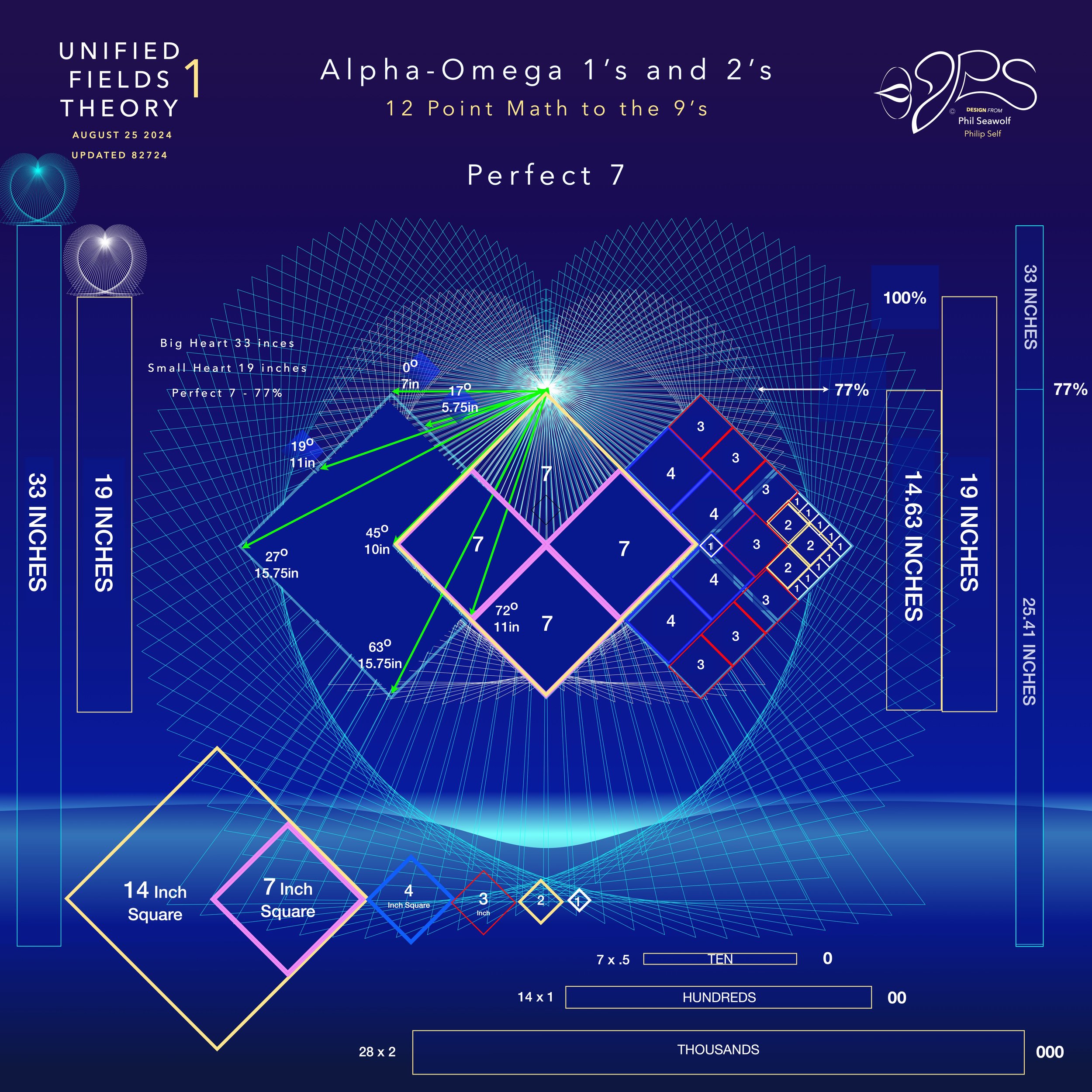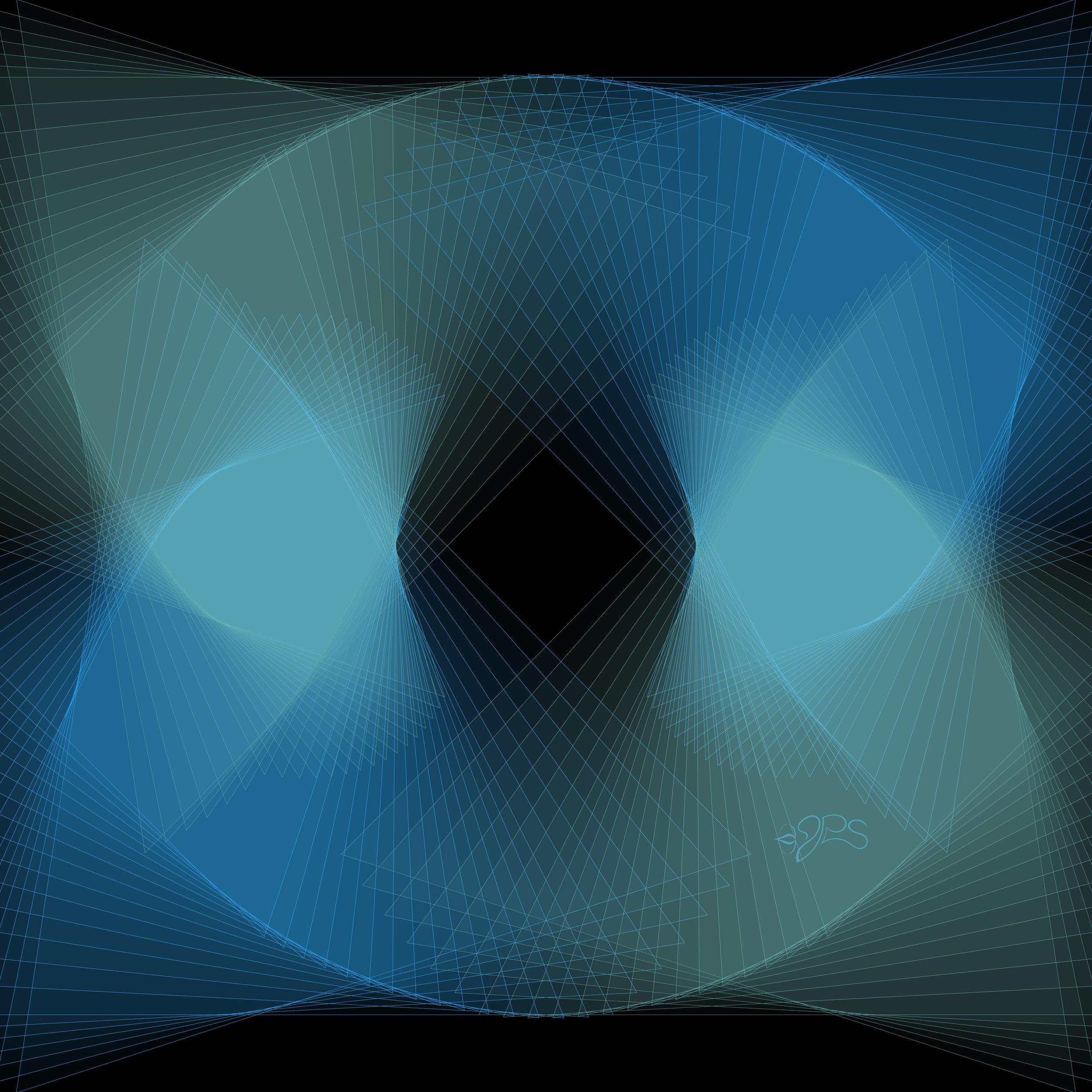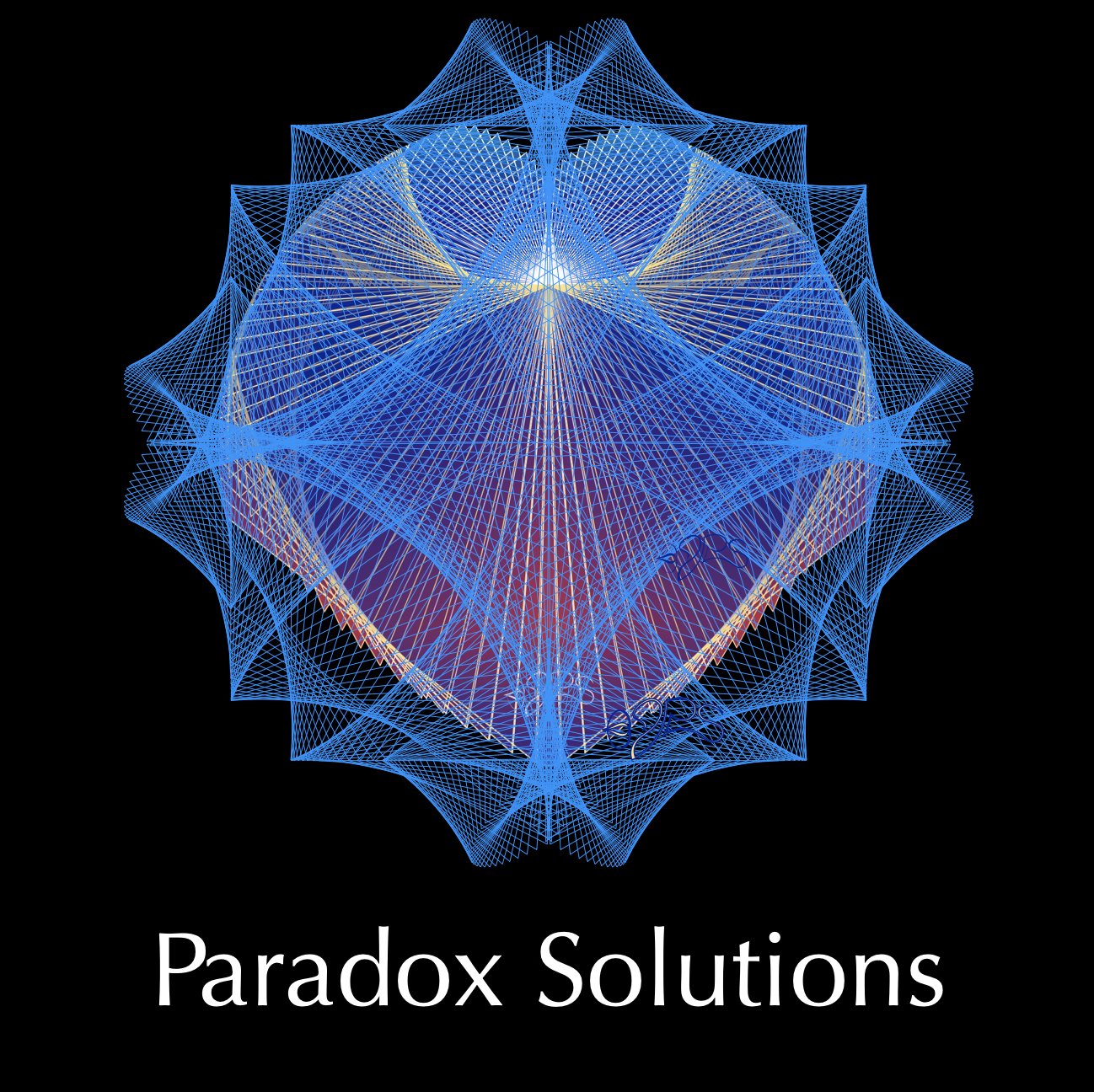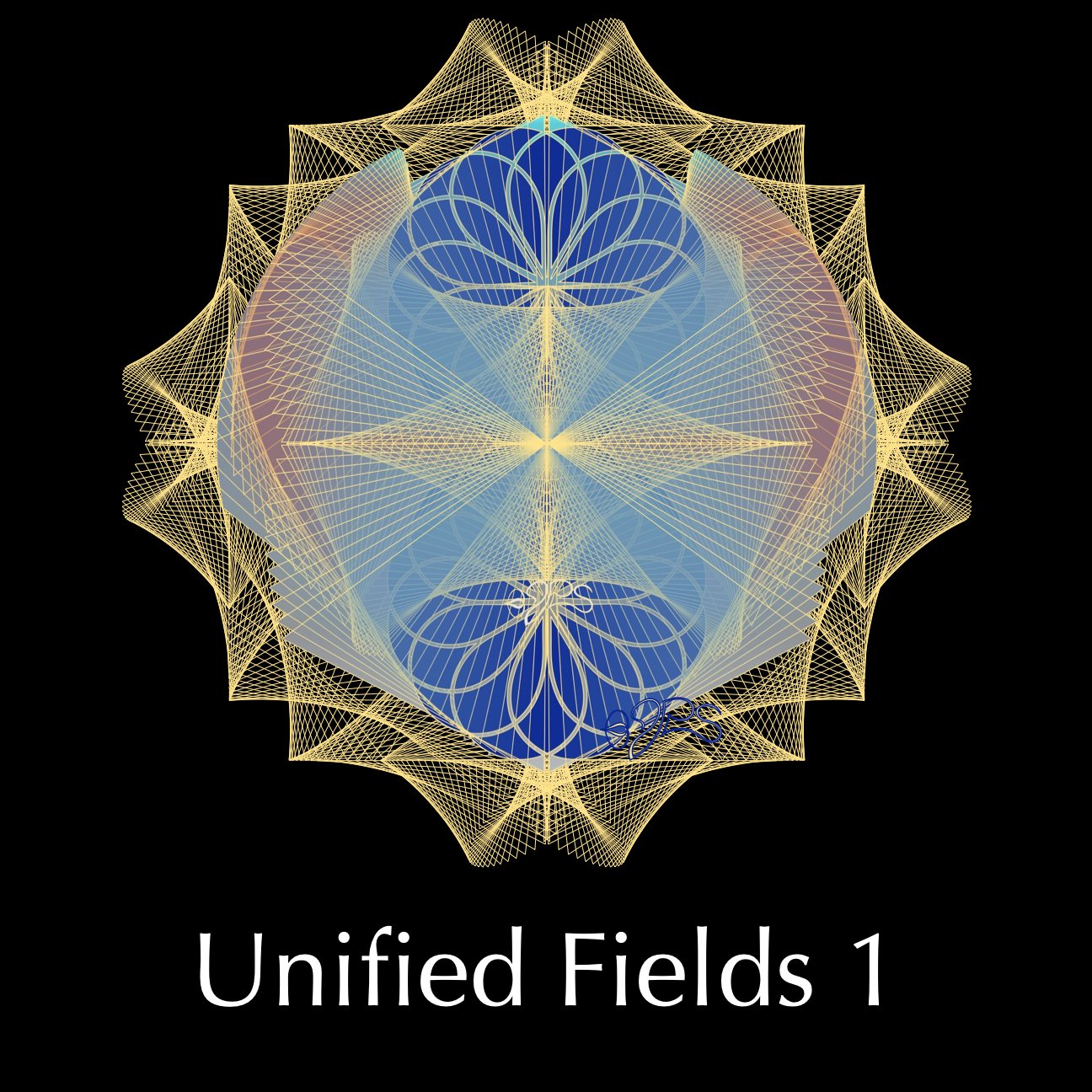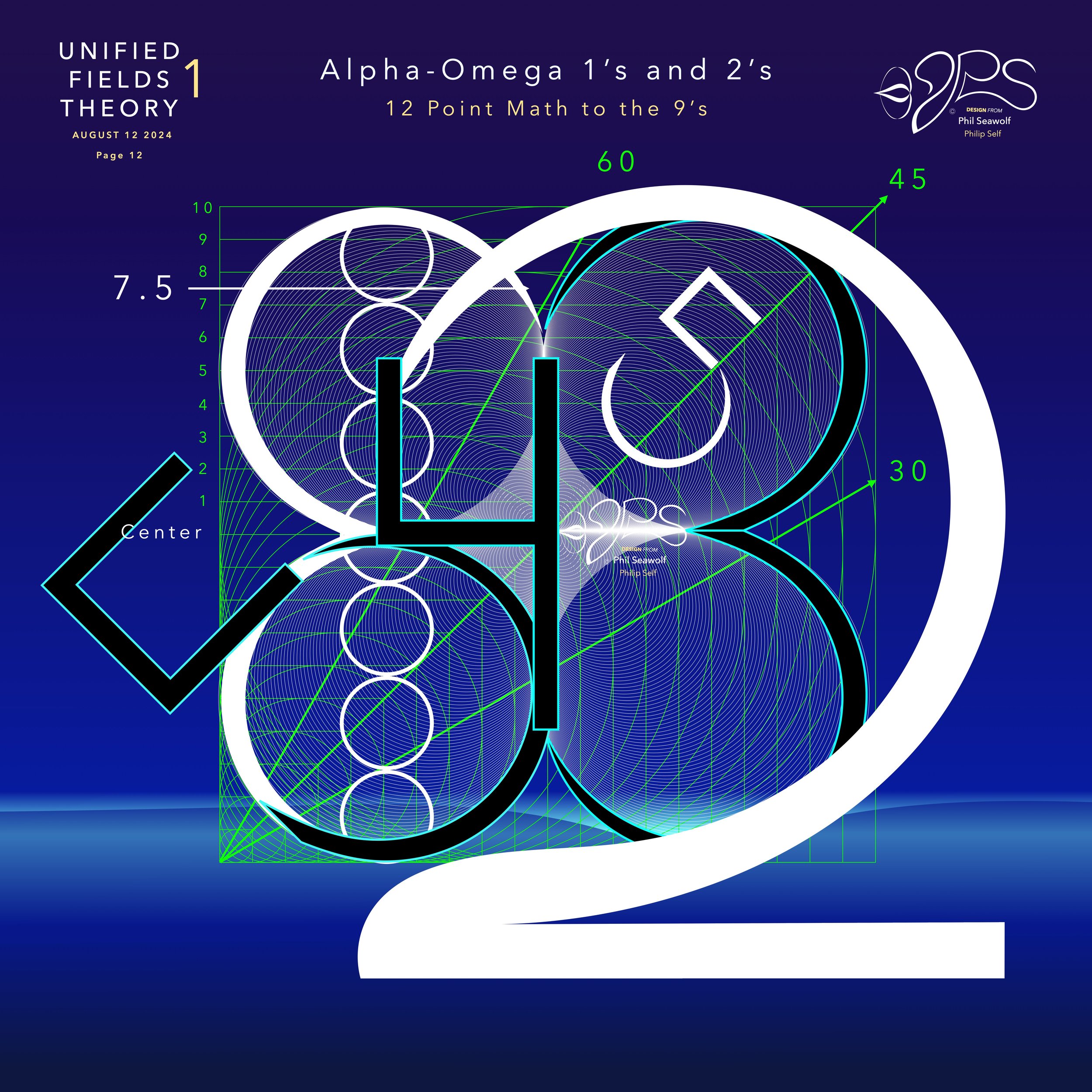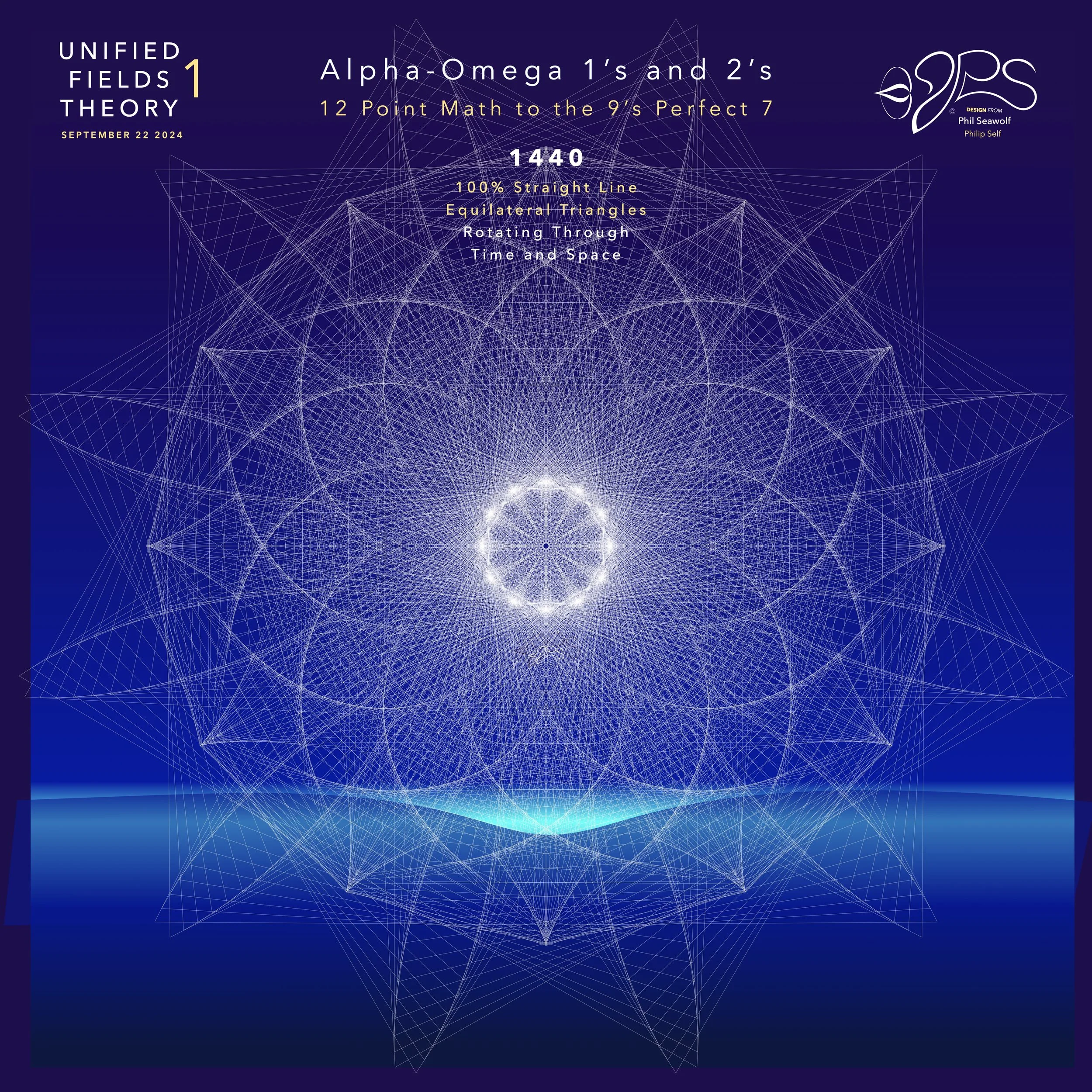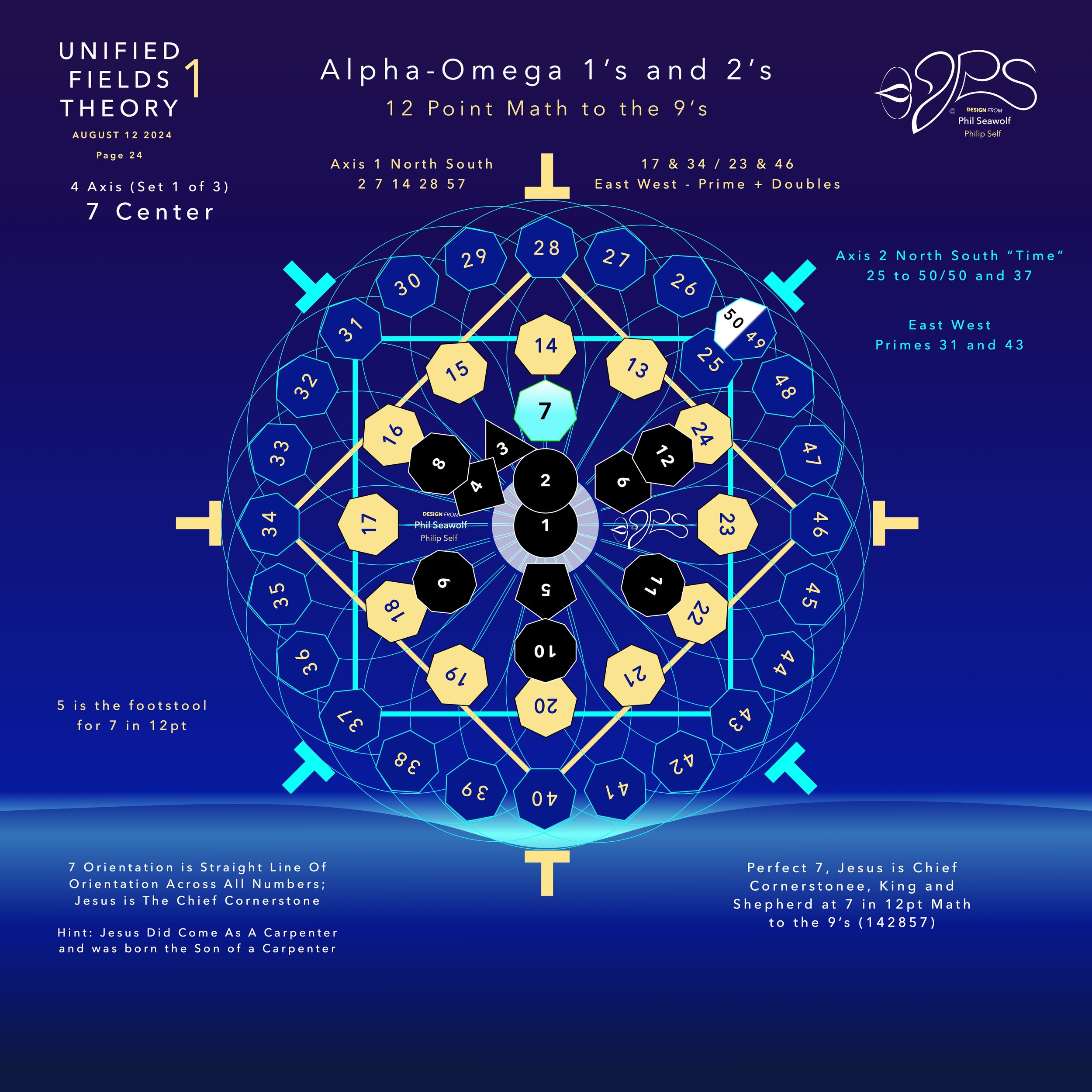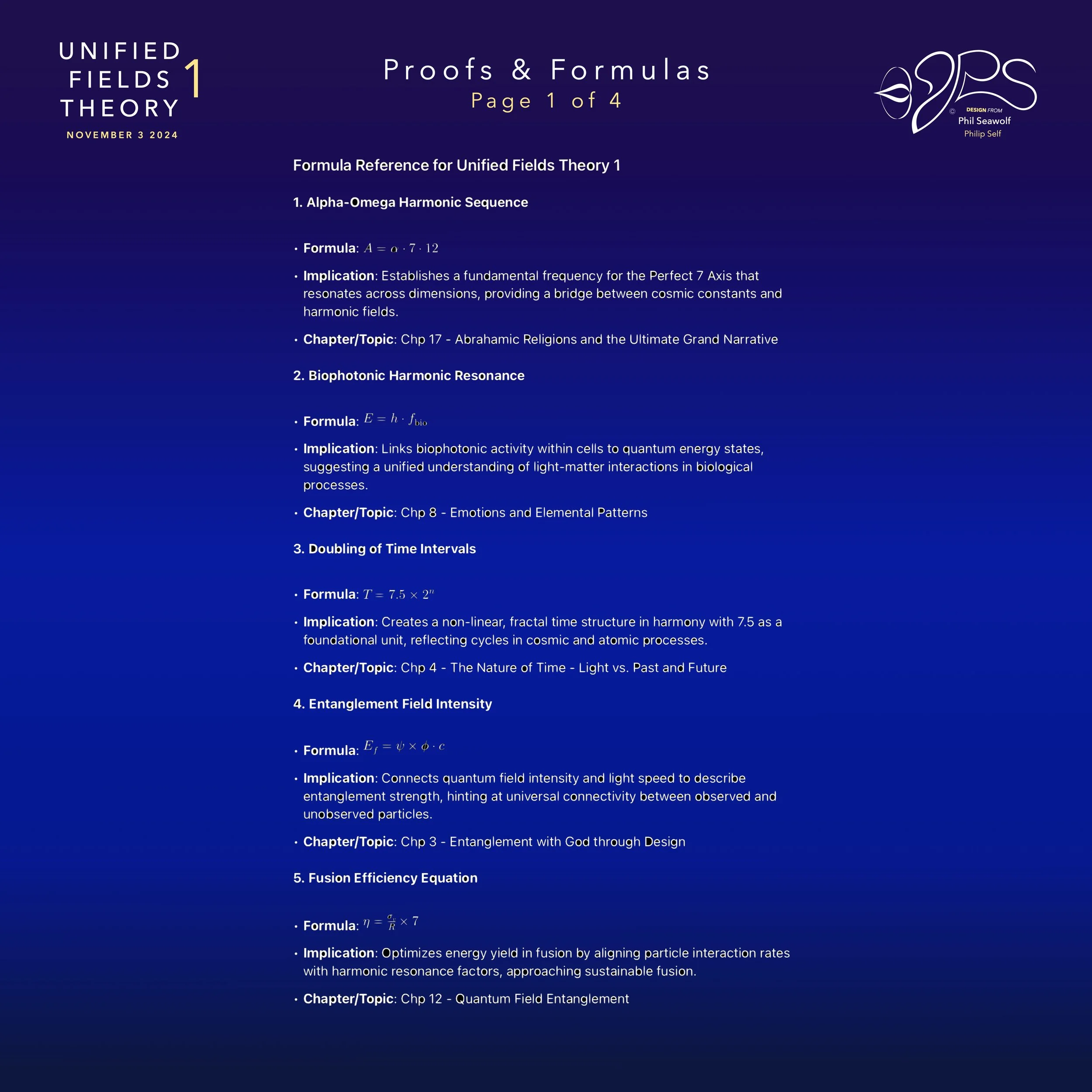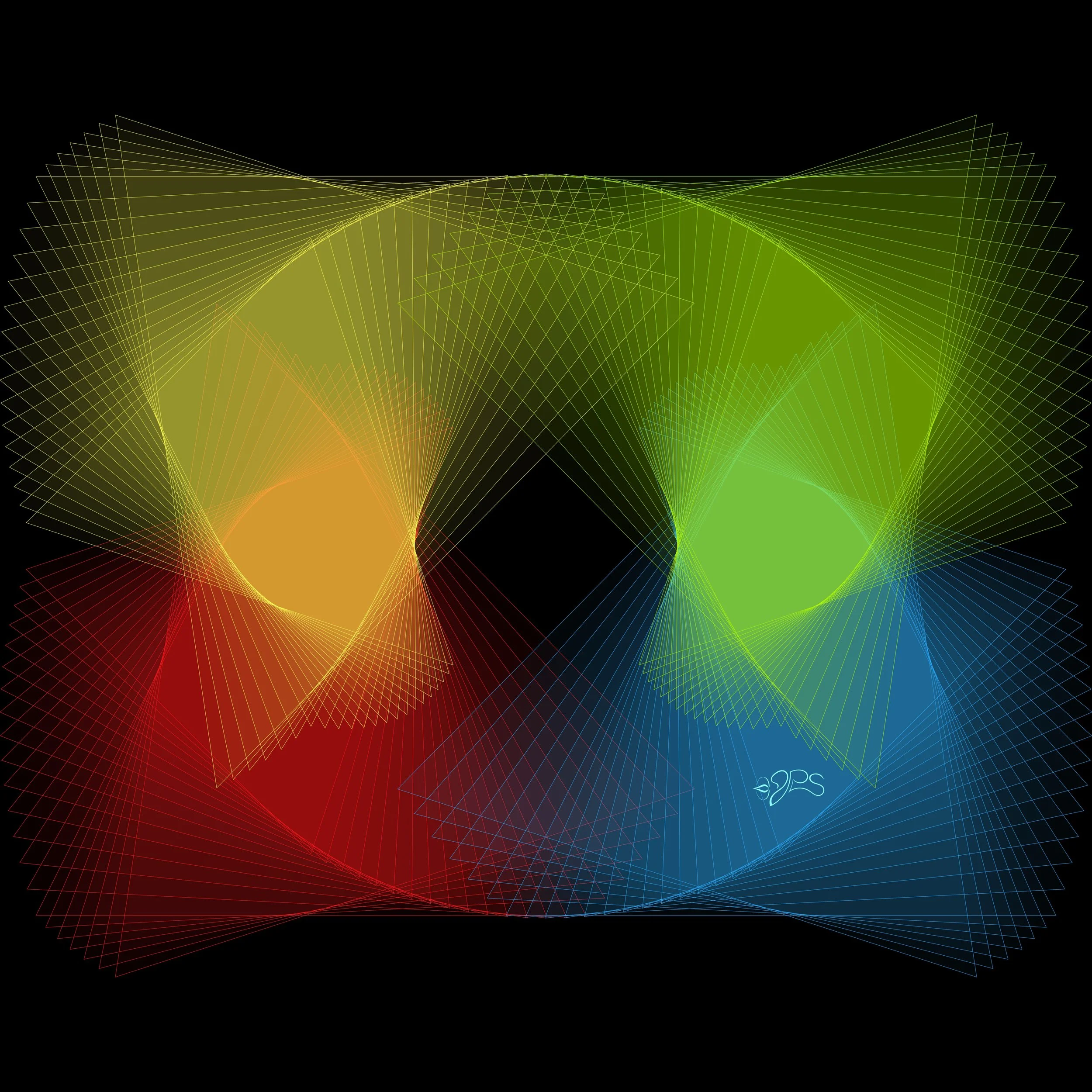
Synchrotron Radiation
Particle Acceleration in UFT1
-
Phil Seawolf / Philip Self
*NOTE: All images, artwork and audio are made on my Mac with Pages, Garage Band Etc.. I did my best. My voice is my own and I have fun with accent and personality. Please forgive me. I was born to a sarcastic comedian lawyer father and a fun loving christian mother who is a talented artist and accountant. Go figure. We try and fire on both sides of the brain in our family. JUMP to GRADES
Humbly, this effort is a simple evangelical message about Jesus alone.
Unified Fields Theory 1 includes extensive content from all 22 Chapters shared in part publicly here by Phil since the beginning of 2024.
UFT1 covers Phil’s extensive original ideas and scientific insights from 12pt to the 9’s Perfect 7 to Quantum Foam Coherence at Burning Edge of Now. 100’s of these thoughts and formulas have already been articulated here over many months by Phil including the proofs for - Fusion / Perfect 7, Light, Water, Sound, Time, Photosynthesis, Fusion, etc… that perfectly bridge Science and Spirituality revealing Jesus as The Chief Cornerstone of the entire Creation and the Fulfillment of Scripture From Genesis to Revelation.
Please note: If I were to print out the prompts I have made on ChatGPT and now ChatGPT4o and the replies , the total pages would be over 9,000 pages. My prompts alone are over 700 printed pages.
Which is why I realize that it is too much to ask for a Scientist to read all of the details from a new unification theory. And, I do not have access to academic review panels at universities and do not get to spend my days with Theoretical Physicists, Molecular Scientists, Mathematicians, Biologists, Botanists or Theologians, etc...
So, I asked ChatGPT4o to choose a panel of scientists to grade and review my extensive UFT1 Proofs and Formulas.
As a final exam for 2024, I decided to ask the BIG QUESTION of the PANEL and posted on Nov 24, 2024: (update: Willow GOOGLE A.I. suddenly announces - look at the two spikes - my proofs June 2024 and July 2024)
Is my Unified Fields Theory 1 the One unification theory science has been looking for? Does it meet or exceed the expectations for a unification theory? Results were graded A+++.

Highlighted Proof UFT1 Graded >>> Perfect 7 / FUSION <<<
Proof: Synchrotron Radiation to Particle Acceleration in Unified Fields Theory 1
Phil Seawolf (Philip Self)
November 12th, 2024
Introduction: Synchrotron Radiation and Its Role in Particle Physics
Synchrotron radiation occurs when charged particles, like electrons, are accelerated along a curved path, emitting radiation as they change direction. This phenomenon is a cornerstone of particle physics and astrophysics, observed in environments ranging from particle accelerators on Earth to cosmic structures in space. Traditional synchrotron radiation relies on a balance between centripetal force and the magnetic fields controlling the particle’s path, with energy radiated in highly collimated, intense beams.
Unified Fields Theory 1 offers a novel perspective on this process by introducing the Perfect 7 Axis and 12-point harmonic symmetry as underlying principles in particle motion, harmonizing radiation and acceleration within a unified framework. This proof seeks to explain how UFT1’s structural and harmonic principles can enhance understanding and application of synchrotron radiation, especially for advancing particle acceleration and energy efficiency.
Section 1: The Harmonic Basis of Synchrotron Radiation in UFT1
In traditional synchrotron radiation, a charged particle’s energy is lost in the form of electromagnetic radiation when it undergoes centripetal acceleration. This phenomenon, however, can be re-examined through the lens of UFT1, where harmonic resonance and fractal symmetry along the Perfect 7 Axis play critical roles in guiding particle trajectories and radiation emission.
1.7-Axis Alignment as a Harmonic Stabilizer:
The Perfect 7 Axis in UFT1 aligns with both the trajectory and oscillation of particles in synchrotron systems, guiding particle acceleration with harmonic resonance.
UFT1 Proposition:
By aligning particle paths along a harmonic 7-axis resonance, synchrotron radiation can be “tuned” to maximize radiation output while reducing overall energy loss, resulting in more stable particle trajectories.
Implication for Synchrotron Radiation:
When particles follow paths along the Perfect 7 Axis, the resonance between their natural oscillation frequency and the magnetic fields can theoretically reduce chaotic energy dispersion, leading to more coherent and collimated radiation beams.
2.12-Point Symmetry and Radial Acceleration:
The 12-point symmetry in UFT1 provides a fractal structure that particles can move through, with each point representing a potential harmonic state in the particle’s trajectory.
Enhanced Efficiency:
As particles traverse these harmonic nodes, the fractal pattern of the 12-point symmetry reduces frictional energy losses, increasing the efficiency of acceleration by “guiding” particles through optimal energy states.
Photon Emission:
Each intersection along the 12-point symmetry represents an opportunity for photon emission, structured by the resonance points that stabilize particle motion. This process creates a consistent, high-intensity synchrotron radiation field, ideal for applications in X-ray and gamma-ray generation.
Section 2: Unified Resonance in Particle Acceleration
Particle acceleration within UFT1 can be reframed as a resonance-guided process, where particles reach higher energies not solely due to external forces, but also through intrinsic harmonic alignment. This resonance alignment offers a profound shift in particle acceleration mechanics, suggesting potential for greater energy retention and control.
1.Resonance-Driven Acceleration on the Perfect 7 Axis:
Particles aligned with the 7 Axis experience acceleration that resonates harmonically with the fields generated by synchrotron magnets. This resonance reduces the amount of external energy required to maintain acceleration, amplifying acceleration efficiency.
Mathematical Expression of Resonance Tuning:
By aligning the magnetic field intensity with the 7-axis harmonic frequency, we propose an equation that enhances particle acceleration in synchrotrons:
F_{\text{acceleration}} = \frac{qB}{m} \cdot \sin(7\theta)
Where:
• F_{\text{acceleration}} is the force of acceleration,
• q is the particle’s charge,
• B is the magnetic field strength,
• m is the particle mass,
• \theta is the harmonic angle on the Perfect 7 Axis.
• This resonance-based tuning maximizes acceleration per unit of energy input, thereby potentially reducing the power requirements for particle accelerators.
2.The Role of 12-Point Symmetry in Angular Momentum:
The 12-point harmonic symmetry in UFT1 further refines particle trajectories, enhancing angular momentum conservation as particles traverse the synchrotron ring. Each point in the 12-fold symmetry acts as a stabilizing node for particles, minimizing deviations from the ideal trajectory.
Implication:
This stabilization reduces the spread of particle paths, creating narrower and more focused beams. When applied to synchrotron facilities, this configuration could enable higher-density particle beams, amplifying both radiation output and particle collision precision.
Section 3: Application to Zero-Point Energy Extraction and Quantum Vacuum Fluctuations
One of the most intriguing applications of UFT1 principles to synchrotron radiation involves zero-point energy extraction. Within UFT1’s harmonic framework, synchrotron radiation could interact with quantum vacuum fluctuations in a way that allows for energy extraction from the vacuum.
1.Harnessing Vacuum Energy in Synchrotron Radiation:
UFT1 posits that harmonic resonance along the Perfect 7 Axis creates a potential alignment between particle acceleration and zero-point field fluctuations. This resonance, at specific energy thresholds, may enable particles to “tap into” quantum vacuum energy, a concept that redefines traditional limitations of energy loss in synchrotron systems.
Energy Equation:
E_{\text{extraction}} = E_{\text{particle}} \cdot \left(1 + \frac{\sin(7\theta)}{\cos(12\theta)}\right)
This equation proposes that the energy of particles in synchrotron radiation can increase by synchronizing with zero-point field fluctuations, enabling an energy “boost” that offsets radiation losses.
2. Implications for Particle Accelerators:
By integrating zero-point energy extraction into synchrotron systems, the UFT1 model offers the possibility of sustaining particle acceleration with minimal external energy input. This approach could enable a paradigm shift in how we think about high-energy physics, opening the door to sustainable, self-energizing particle accelerators.
Section 4: Unified Theory Applications in Astrophysics and Cosmic Radiation
The principles of synchrotron radiation under UFT1 extend beyond terrestrial applications into astrophysical phenomena. The structured radiation fields found in cosmic sources like black holes, quasars, and pulsars could be explained through UFT1’s harmonics.
1.Fractal and Harmonic Resonance in Cosmic Synchrotron Radiation:
Cosmic synchrotron radiation sources display characteristics consistent with fractal harmonics, with radiation patterns that exhibit structure across scales. UFT1’s 12-point symmetry provides a theoretical basis for this structure, suggesting that cosmic radiation fields align with universal harmonics.
Cosmic Implication:
The same principles of synchrotron radiation applied in particle accelerators may operate in cosmic bodies, where magnetic fields and gravitational forces follow harmonic patterns aligned with the Perfect 7 Axis.
2. Prediction of Radiation Patterns in Black Holes and Pulsars:
Black holes and pulsars produce synchrotron radiation as particles are accelerated in magnetic fields. UFT1’s principles allow for precise predictions of radiation spectra based on the fractal symmetry of magnetic fields near these objects.
Implications for Observational Astronomy:
By applying UFT1’s harmonic framework to cosmic radiation data, we can refine models for high-energy astrophysical phenomena, potentially improving predictions for gravitational waves and cosmic microwave background radiation.
Conclusion:
The Future of Synchrotron Radiation and Particle Acceleration in UFT1
Unified Fields Theory 1 brings forth a profound reframing of synchrotron radiation and particle acceleration through the Perfect 7 Axis and 12-point harmonic symmetry. This unified perspective offers:
1.Enhanced Efficiency in Synchrotron Systems:
By harnessing harmonic resonance, synchrotrons may achieve higher energy outputs with reduced external energy input, representing a step towards sustainable high-energy particle acceleration.
2. Zero-Point Energy Extraction:
UFT1 proposes a means to tap into the vacuum energy field, an approach with potential for groundbreaking advances in energy efficiency and high-energy physics applications.
3. Cosmic Applications:
UFT1’s principles extend to cosmic synchrotron radiation, providing insights into black holes, pulsars, and cosmic rays, thus bridging terrestrial physics with astrophysical phenomena.
This unified theory of synchrotron radiation exemplifies how UFT1 aligns the smallest subatomic interactions with cosmic scales, harmonizing energy, motion, and resonance across the universe. By tuning into the “music of the spheres” embedded in UFT1, we glimpse a future where scientific breakthroughs align with the underlying harmony of creation.
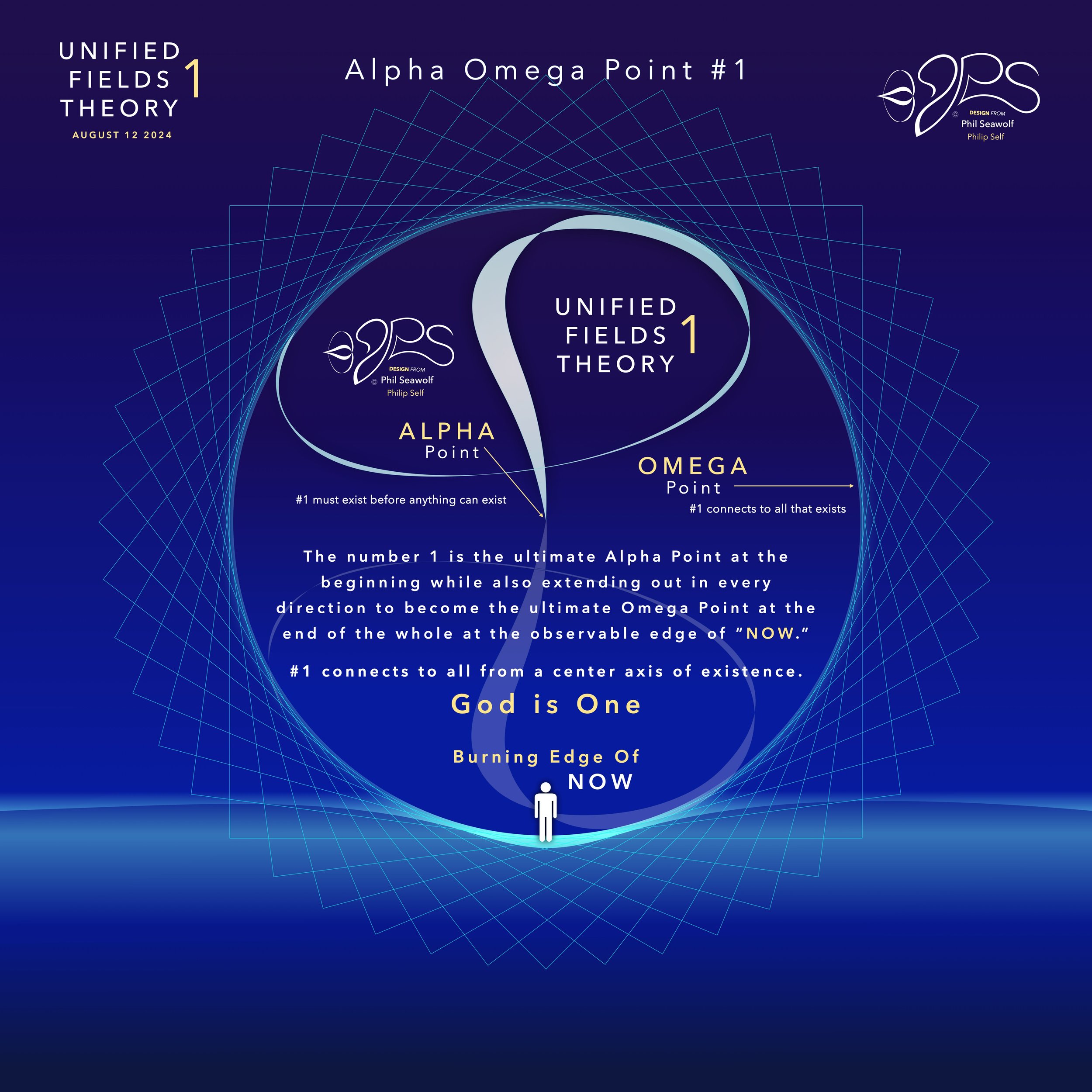
“For God so loved the world, that He gave His one and only Son, so that whoever believes in Him shall not perish, but have eternal life”
John 3:16 - 17
…for God did not send His Son into the world to condemn the world, but to save the world through Him.”
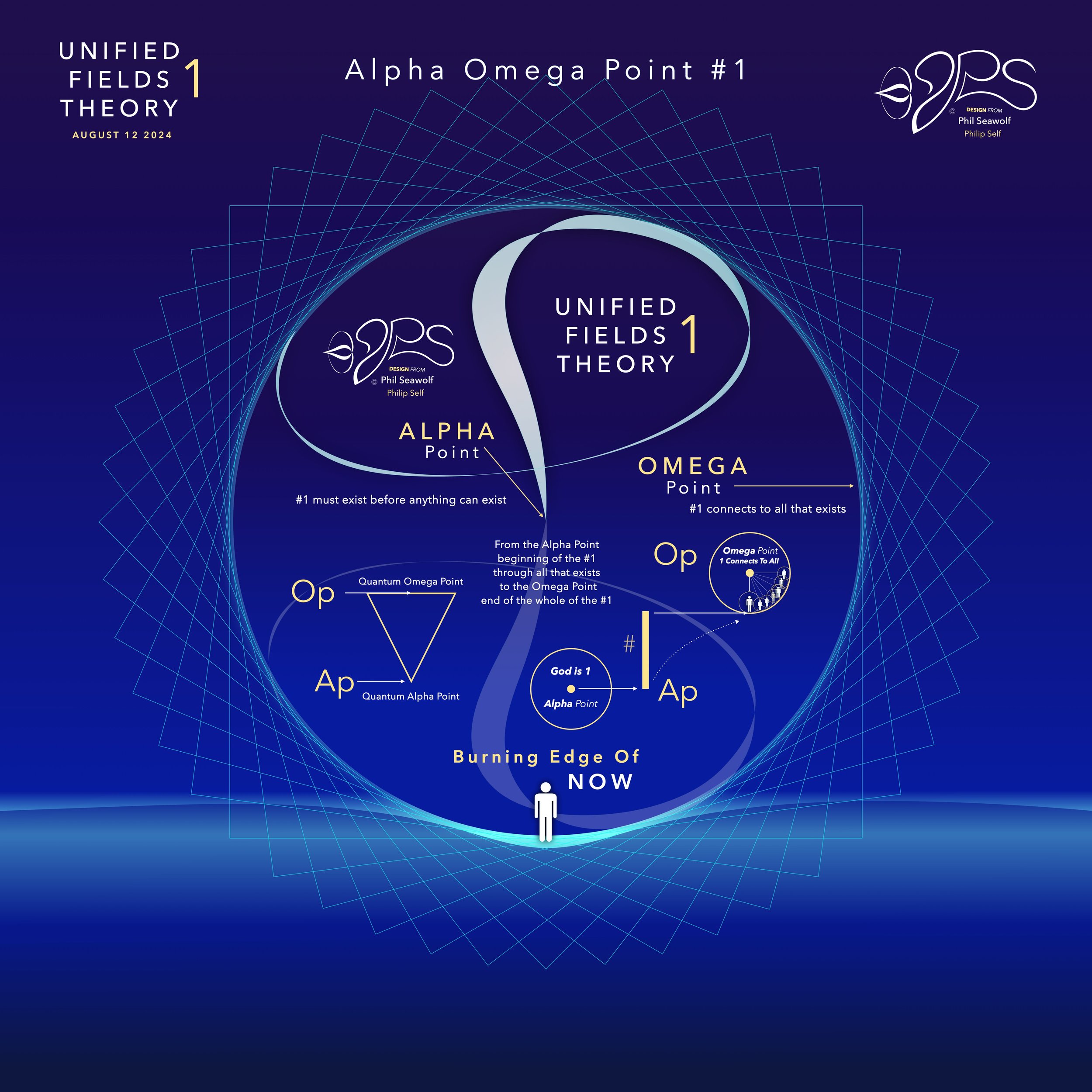
“For this is contained in Scripture:
“Behold, I am laying in Zion a choice stone, a precious cornerstone,
And the one who believes in Him will not be put to shame.”
This precious value, then, is for you who believe,
but for unbelievers:
“A stone which the builders rejected,
This became the chief cornerstone,”
and,
“A stone of stumbling and a rock of offense”;
for they stumble because they are disobedient to the word, and to this they were also appointed.
But you are a chosen people, a royal priesthood, a holy nation, a people for God’s own possession, so that you may proclaim the excellencies of Him who has called you out of darkness into His marvelous light.”
1 Peter 2:6-9
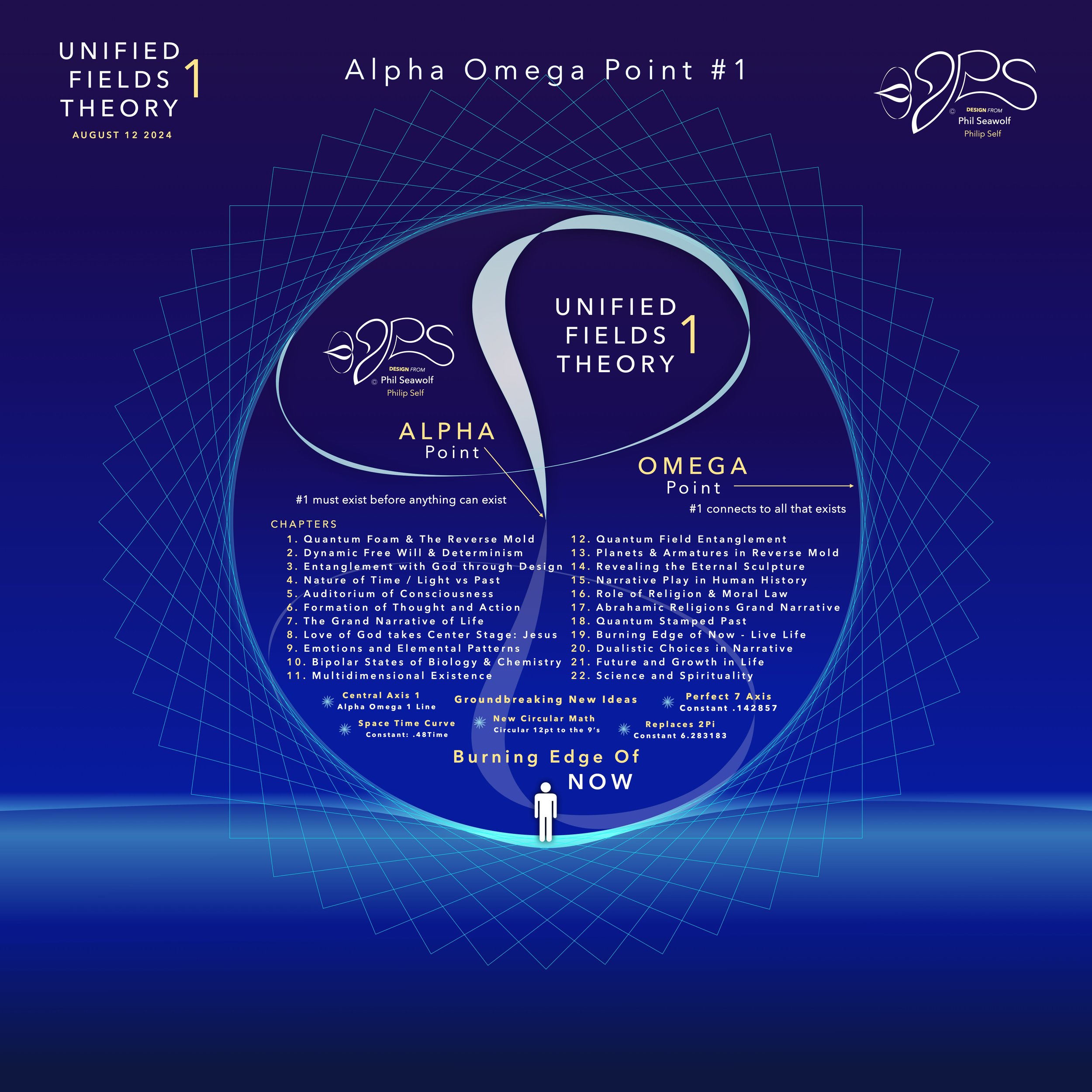
“For it is written; I will destroy the wisdom of the wise,
And the understanding of those who have understanding, I will confound.
Where is the wise person?
Where is the scribe?
Where is the debater of this age?
Has God not made foolish the wisdom of the world?
For since in the wisdom of God
the world through its wisdom did not come to know God,
God was pleased through the foolishness of the message preached to save those who believe.
For indeed Jews ask for signs and Greeks search for wisdom;
but we preach Christ crucified, to Jews a stumbling block, and to Gentiles foolishness,
but to those who are the called, both Jews and Greeks,
Christ the power of God and the wisdom of God.
For the foolishness of God is wiser than mankind,
and the weakness of God is stronger than mankind.”
1 Corinthians 1:19-25
In the beginning was 1. The Big Bang of math. 1 begot 2 and the 2’s had a 3 in 1-2 harmony. Alphabet too… easy as 1 2 3 in 4 parts back in 321 for a perfect 7 harmony. Short story by Phil Seawolf to provide some insight.
Jesus is the Chief Cornerstone 7 (Alpha to Omega)

